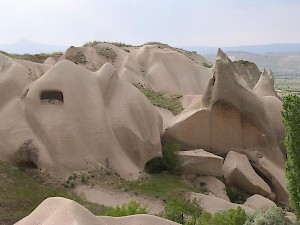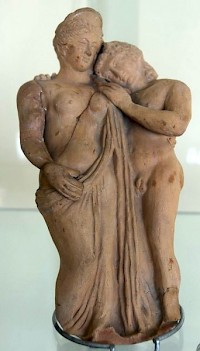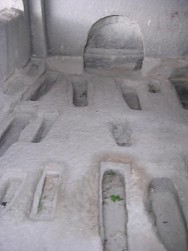Cappadocia (3)
Cappadocia: ancient name for the country between the rivers Halys and Euphrates, today central Turkey.
Roman Province

The Roman annexation of Cappadocia was only the last step of a process of self-romanization that had began when Ariarathes IV Eusebes had allied himself to the empire in 188 BCE. But although the country had had much time to get acquainted to its new overlords, it had a strong native character. An interesting example is the philosopher Apollonius of Tyana, who was very popular in the greater, Greek-speaking world, but wrote his treatise On Sacrifice in the Cappadocian language.
The new capital was Caesarea (modern Kayseri), and the Romans saw to the rapid urbanization of the country. To judge by the rank of its equestrian governors (procurators) and the presence of auxiliary military units only, Cappadocia was not regarded as a very important province. Its eastern frontier, the river Euphrates, was part of the zone of influence of the governor of Syria, who used IIII Scythica and XII Fulminata, to defend this sector against possible invasions from the Parthian Empire. It was only during the civil war known as the Year of the Four Emperors (69) that Cappadocian received its first governor of senatorial rank, a man named Gnaeus Pompeius Collega. This was probably related to the merging of Cappadocia with Galatia and the annexation of Comagene, an old principality along the Euphrates and the new base of IIII Scythica. Several years later, XVI Flavia Firma was stationed at Satala; at some stage it was replaced by XV Apollinaris.

The frontier was usually well-defended, but war was always possible in the ancient world. During the reign of Hadrian, governor Arrian of Nicomedia, better known as author of a book on Alexander the Great, fought against the tribe of the Alans, a war that he described in his Order of Battle. In 161, Marcus Sedatius Severianus was defeated (and VIIII Hispania was annihilated) by the Parthians, who tried to benefit from the death of the emperor Antoninus Pius and the accession of Marcus Aurelius. He sent his brother Lucius Verus to avenge this Roman defeat, and he was quite successful. In the third century, however, the Parthian Empire collapsed and was replaced by the Sasanian Empire, which had more efficient armies. In 256, they even attacked Satala, and in 260, the Cappadocian cities Caesarea, Tyana, Comana, Cybistra, and Sebastea were sacked. Several emperors were active in the east, and Rome ultimately restored its prestige during the reign of Diocletian (284-305).
During the crisis of the second half of the third century, Christianity appears to have spread. During the council of Nicaea (in 325), at least ten bishops of Cappadocia were present. The circle of scholars around Saint Macrina, which included her brothers Basil the Great and Gregory Nazianzus together with Gregory of Nyssa, is usually called the "Cappadocian fathers". They played an important role in the discussions on the Trinity.
Late Antiquity

The age of prosperity ended in the fifth century, when the great migrations started. In the end, Roman power in the west collapsed, but in the east, the Byzantine Empire continued to exist. Its emperor Justinian reorganized Cappadocia, and there are many buildings known from this age. The historian Procopius mentions that Caesarea was rebuilt and refers to similar projects elsewhere.note
However, when at the end of the sixth century war with the Persians was resumed, after an essentially quiet period that had started in the 360s, Cappadocia became a war zone. The Sasanian king Khusrau II occupied parts of the province from 611 to 628, but was expelled by the emperor Heraclius. However, the two empires were weakened, and the Sasanian world collapsed when the Islamic troops invaded Iran. The Byzantine Empire survived, but Cappadocia remained a border zone. It was in this age, the seventh and eighth centuries, that the Christian rock churches in Cappadocia were made - essentially hiding places.